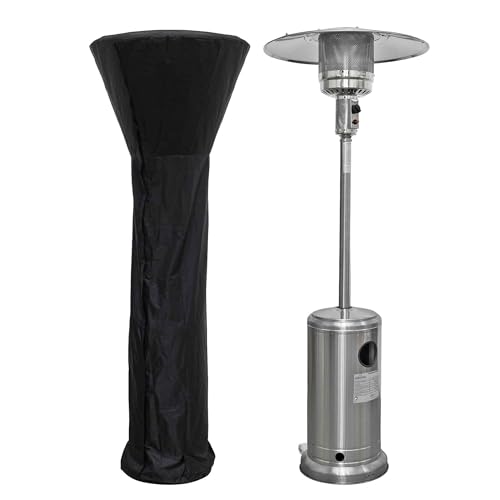The Unknown Benefits Of Buy Patio Heating
The Essential Guide to Buying Patio Heating: Everything You Need to Know
As the weather condition turns cooler, numerous house owners start to think about how to extend their outdoor living spaces into the cold months. Patio heating enables for cozy gatherings under the stars, boosting year-round use of patio areas, decks, and gardens. This post will offer an extensive overview of patio heating options, aspects to consider when purchasing, and answers to frequently asked questions.
Types of Patio Heaters
Patio heaters come in various styles and performances, each accommodating various user needs. Here's a breakdown of the most popular options:
1. Propane Patio Heaters
- Description: These portable heaters work on propane gas cylinders.
- Advantages:
- Easy to move and set up.
- Supplies instant heat.
- Suitable for bigger outdoor areas.
- Considerations:
- Requires routine refilling of propane tanks.
- May be restricted by local policies on outdoor gas appliances.
2. Natural Gas Patio Heaters
- Description: Connected straight to a natural gas line.
- Advantages:
- No requirement for refilling; a constant supply of hot gas.
- Cost-efficient in the long term for regular usage.
- Considerations:
- Requires professional installation.
- Less portable than propane heaters.
3. Electric Patio Heaters
- Description: Heaters powered by electrical power.
- Benefits:
- Easy to set up and utilize; just plug them in.
- Suitable for small events and minimal outdoor areas.
- Factors to consider:
- Less effective than gas heaters; might not heat big locations efficiently.
- Requires access to electrical outlets.
4. Infrared Heaters
- Description: Heaters that utilize infrared technology to warm objects and people straight instead of heating the surrounding air.
- Benefits:
- Highly energy-efficient and eco-friendly.
- Instantaneous heat without waiting.
- Considerations:
- Effectiveness can be restricted by wind.
- Typically more pricey than traditional heaters.
5. Fire Pits and Tabletop Fireplaces
- Description: Open flame units that can likewise work as stylish outdoor decor.
- Benefits:
- Multifunctional; supplies heat and ambiance.
- Factors to consider:
- Requires constant supervision and upkeep.
- Less efficient heat distribution compared to other heaters.
Aspects to Consider When Buying Patio Heaters
Buying patio heating needs cautious factor to consider to guarantee you acquire an unit that satisfies your particular needs. Below are crucial aspects to examine:
Size of the Area:
The primary factor to consider is the size of the outdoor space you wish to heat. Bigger patio areas may require more powerful heaters or numerous systems to disperse heat efficiently.Heating Capacity:
This is measured in BTUs (British Thermal Units). Normally, greater BTU scores indicate a heater that can create more heat.Mobility and Placement:
Determine whether you prefer a portable service or a fixed setup. Consider where you prepare to place the heater, and how frequently you may need to move it.Fuel Source:
Evaluate your preference for propane, natural gas, or electrical designs based on accessibility and convenience. Each fuel type has associated expenses and factors to consider.Safety Features:
Opt for designs equipped with security functions such as tip-over protection and automated shut-off. This is important when utilizing heaters in outdoor spaces.Design and Aesthetics:
Choosing an aesthetically enticing heater can boost your outdoor atmosphere. Try to find options that match your existing furniture and decor.Weather condition Resistance:
If the heater will remain outdoors all year, think about models created to hold up against numerous weather elements such as rain or snow.
Comparison Table of Patio Heaters
Type
Heat Source
Portability
Rate Range
Pros
Cons
Propane Patio Heaters
Propane Gas
High
₤ 100-₤ 400
Immediate heat, portable
Needs refilling, regional guidelines
Gas Heaters
Natural Gas
Low
₤ 300-₤ 700
Continuous supply, cost-effective
Requires installation
Electric Patio Heaters
Electrical power
High
₤ 50-₤ 300
Easy to utilize, no fuel needed
Restricted variety and heat
Infrared Heaters
Electrical power
Medium
₤ 150-₤ 500
Efficient, immediate heat
Wind effects, higher expense
Fire Pits/ Fireplaces
Wood/Gas
Variable
₤ 100-₤ 600
Ornamental, multifunctional
Requires supervision, maintenance
Frequently Asked Questions About Patio Heating
1. The number of BTUs do I require for my patio?
The number of BTUs needed depends upon the size of your patio. A basic standard is:
- Up to 20 sq feet: 10,000 BTUs
- 20-50 sq ft: 20,000 BTUs
- 50-100 sq feet: 30,000 BTUs
2. Are patio heaters safe to utilize?
Yes, as long as security standards are followed. Heating Solutions for heaters with security functions and ensure they are run in well-ventilated locations.
3. Can electric patio heaters be used indoors?
It is not advised to use outdoor heaters indoors due to the danger of fire and carbon monoxide gas accumulation. Constantly confirm maker guidelines.
4. What is the average cost to run a patio heater?
Operating costs differ widely based on the kind of fuel and energy costs in your location. For electric systems, typical usage might cost around ₤ 0.07-₤ 0.30 per hour.
5. How do I keep my patio heater?
Regular maintenance includes clearing out any particles, checking gas connections for leaks, and guaranteeing that electrical parts are safe and functioning.
Investing in patio heating is an exceptional method to extend the satisfaction of outdoor areas well into the cooler months. With various options available, prospective buyers should assess their distinct needs, space measurements, and chosen heating methods. By considering the aspects and contrasts provided in this short article, property owners can make a knowledgeable decision and ensure their patio stays a comfortable social center throughout the year.
